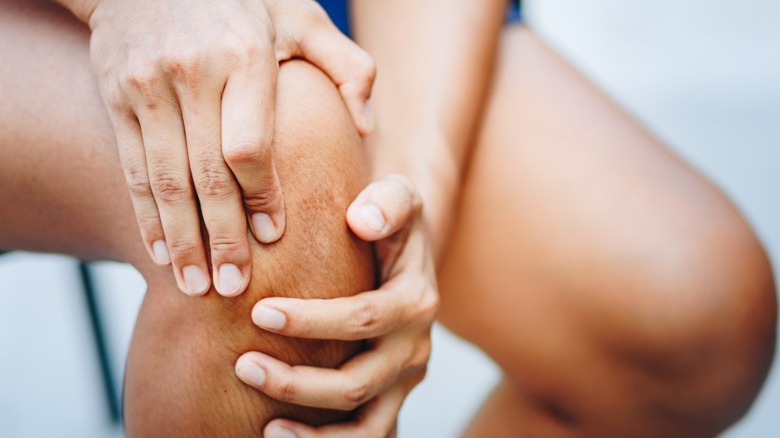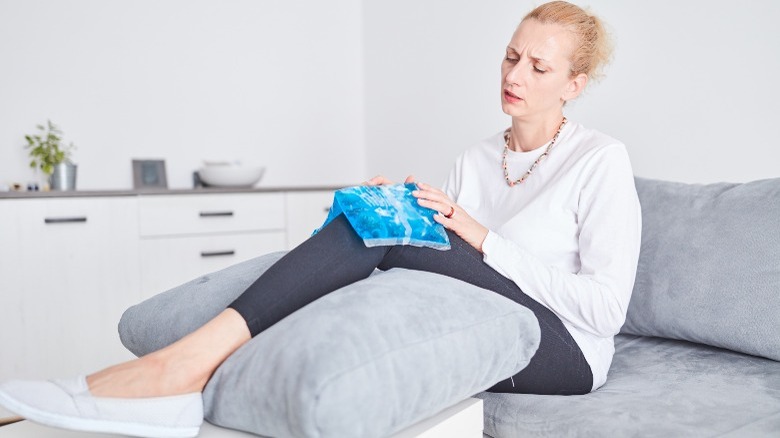The Best Way To Relieve Knee Pain At Home
If you suffer from knee pain, whether it is due to a chronic condition, arthritis or injury — you're not alone. According to an article published in American Family Physician, one in four adults experience knee pain.
The health experts at Mayo Clinic report that there are many kinds of knee pain and the severity of the discomfort will depend on the location of the pain and its causes. Related symptoms can include swelling, stiffness, weakness, popping noises, and the inability to straighten your leg, among others. Given that knees play a regular role in mobility, knee injuries — and the pain that results from them — are quite common. One type of knee injury is a torn meniscus, which is the padding between your shin and thighbones. This can happen simply from turning your knee suddenly. Another common knee injury is patellar tendonitis, an injury to the fibrous tissue connecting the kneecap to the shinbone. People who engage in sports or activities requiring frequent jumping can often develop this.
If you are suffering from some form of knee pain, it may not be serious enough to require professional medical treatment or surgery. In fact, in some instances, knee pain can respond well to at-home treatment.
How to get your knees back up and running
Depending on the nature of your knee pain, the experts at Healthline have a number of at-home treatment recommendations you can try.
First, to prevent knee pain from happening at all, try incorporating exercise such as cycling, swimming or tai chi into your daily routine. If you've twisted or sprained your knee, a process called "RICE," which stands for rest, ice, compression, and elevation, may help. Take the weight off your feet and apply ice and compression to the inflamed area, while elevating your foot. If you are experiencing pain without inflammation, see if applying a heating pad for 20-minute periods or a hot bath does the trick (via Healthline). Are you someone who has consistent knee pain and is also overweight? This could be a sign it's time to shed those extra pounds. According to the Arthritis Foundation, even just being 10 pounds overweight can put up to 50 pounds of extra strain on your knees.
To address pain in the front part of your knee, licensed chiropractor Dr. Eric Berg suggests stretching your calf muscles, which can reduce pain and improve mobility in your knees, as well as the tops of your feet. If you have access to stairs, put the front part of your feet on the end of a step and stretch your calves from that position. After doing this for a few days, stand on a level surface, put a pillow between your knees and draw gentle circles with your knees clockwise, and then counterclockwise, ten times in each direction.
If, after you try some of these at-home methods, there is little change in your knee pain, or your symptoms worsen, consider calling your doctor.


